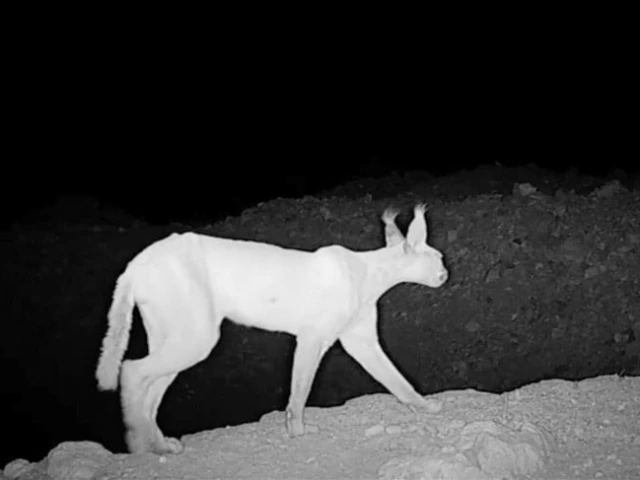Caracal sightings offer hope
Pakistan's rare wild cat nears local extinction

In the dry hills west of Karachi, a caracal moves silently across rocky terrain, its long, black-tufted ears twitching at every sound. A hidden camera captures the fleeting moment, offering rare evidence that one of Pakistan's most elusive wild cats still survives.
The caracal, a medium-sized wild cat native to arid regions of Africa, the Middle East, Central Asia and South Asia, is now critically endangered in Pakistan. Wildlife experts warn that habitat loss, increasing human intrusion, and retaliatory killings have pushed the species to the brink of local extinction.
"Local people either kill the cat to protect their sheep, goats, deer and other small animals, or in retaliation for its preying on small livestock," wildlife expert Saeed-ul-Islam told Anadolu.
Hunting for the illegal pet trade poses another threat.
"This has left the animal's population in only a few hundred, not even a thousand, in Pakistan," he said.
Javed Mahar, conservator with Sindh's Wildlife Department, said the caracal still exists in parts of Sindh and other provinces, but that the absence of official data makes it difficult to assess its population.
One estimate puts the number between 100 and 200.
Typically nocturnal and highly secretive, the caracal is a solitary carnivore that preys on birds, rodents and small mammals. It is known for its long legs, tufted ears and remarkable hunting agility. The species is near extinction in North Africa, critically endangered in Pakistan and endangered in Jordan, though populations remain stable in parts of central and southern Africa.
New hopes for survival
In Pakistan, the species clings to survival in the Cholistan Desert of Punjab province, Sindh's Kirthar Range, and the highlands of central and southern Balochistan, said Zafeer Ahmad Shaikh, head of the Indus Fishing Cat Project (IFCP), a wildlife conservation group active in the region for more than four years.
Conservationists recently recorded a caracal on the southern outskirts of Kirthar National Park near Karachi, offering rare visual evidence that the once widespread species still exists there.
"We spent weeks trying to spot this rare species, which we thought no longer existed in this part of Pakistan," said Zohaib Ahmad, one of the conservationists who set up a camera trap after reports of a caracal crossing a nearby road in daylight in January.
"This is the first camera-trap record of a caracal in years," he told Anadolu. "It offers firm evidence that caracals are still present in Pakistan."
The footage, recorded by IFCP, shows an adult male caracal wandering through the hilly terrain of Kirthar National Park. Out of about 400 clips collected from that camera over two weeks, it was the only one showing a caracal, Shaikh said.
























COMMENTS
Comments are moderated and generally will be posted if they are on-topic and not abusive.
For more information, please see our Comments FAQ